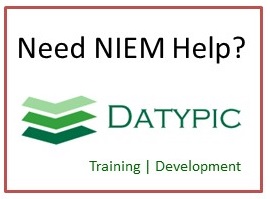gml:VerticalDatumType
Complex type information
Namespace: http://www.opengis.net/gml/3.2
Schema document: external/ogc/gml/3.2.1/datums.xsd
Content
- Sequence [1..1]
- gml:metaDataProperty [0..*] deprecated
- gml:description [0..1] The value of this property is a text description of the object. gml:description uses gml:StringOrRefType as its content model, so it may contain a simple text string content, or carry a reference to an external description. The use of gml:description to reference an external description has been deprecated and replaced by the gml:descriptionReference property.
- gml:descriptionReference [0..1] The value of this property is a remote text description of the object. The xlink:href attribute of the gml:descriptionReference property references the external description.
- gml:identifier [1..1] Often, a special identifier is assigned to an object by the maintaining authority with the intention that it is used in references to the object For such cases, the codeSpace shall be provided. That identifier is usually unique either globally or within an application domain. gml:identifier is a pre-defined property for such identifiers.
- gml:name [0..*] The gml:name property provides a label or identifier for the object, commonly a descriptive name. An object may have several names, typically assigned by different authorities. gml:name uses the gml:CodeType content model. The authority for a name is indicated by the value of its (optional) codeSpace attribute. The name may or may not be unique, as determined by the rules of the organization responsible for the codeSpace. In common usage there will be one name per authority, so a processing application may select the name from its preferred codeSpace.
- gml:remarks [0..1]
- gml:domainOfValidity [0..1] The gml:domainOfValidity property implements an association role to an EX_Extent object as encoded in ISO/TS 19139, either referencing or containing the definition of that extent.
- gml:scope [1..*] The gml:scope property provides a description of the usage, or limitations of usage, for which this CRS-related object is valid. If unknown, enter "not known".
- Choice [0..1]
- gml:anchorDefinition gml:anchorDefinition is a description, possibly including coordinates, of the definition used to anchor the datum to the Earth. Also known as the "origin", especially for engineering and image datums. The codeSpace attribute may be used to reference a source of more detailed on this point or surface, or on a set of such descriptions. - For a geodetic datum, this point is also known as the fundamental point, which is traditionally the point where the relationship between geoid and ellipsoid is defined. In some cases, the "fundamental point" may consist of a number of points. In those cases, the parameters defining the geoid/ellipsoid relationship have been averaged for these points, and the averages adopted as the datum definition. - For an engineering datum, the anchor definition may be a physical point, or it may be a point with defined coordinates in another CRS.may - For an image datum, the anchor definition is usually either the centre of the image or the corner of the image. - For a temporal datum, this attribute is not defined. Instead of the anchor definition, a temporal datum carries a separate time origin of type DateTime.
- gml:anchorPoint deprecated
from subst. group gml:anchorDefinition - gml:realizationEpoch [0..1] gml:realizationEpoch is the time after which this datum definition is valid. See ISO 19111 Table 32 for details.
from type gml:DefinitionBaseTypefrom type gml:DefinitionTypefrom type gml:AbstractDatumType
Attributes
| Name | Occ | Type | Description | Notes |
|---|---|---|---|---|
| gml:id | [1..1] | xsd:ID | from type gml:DefinitionBaseType |
Used by
- Element gml:VerticalDatum



